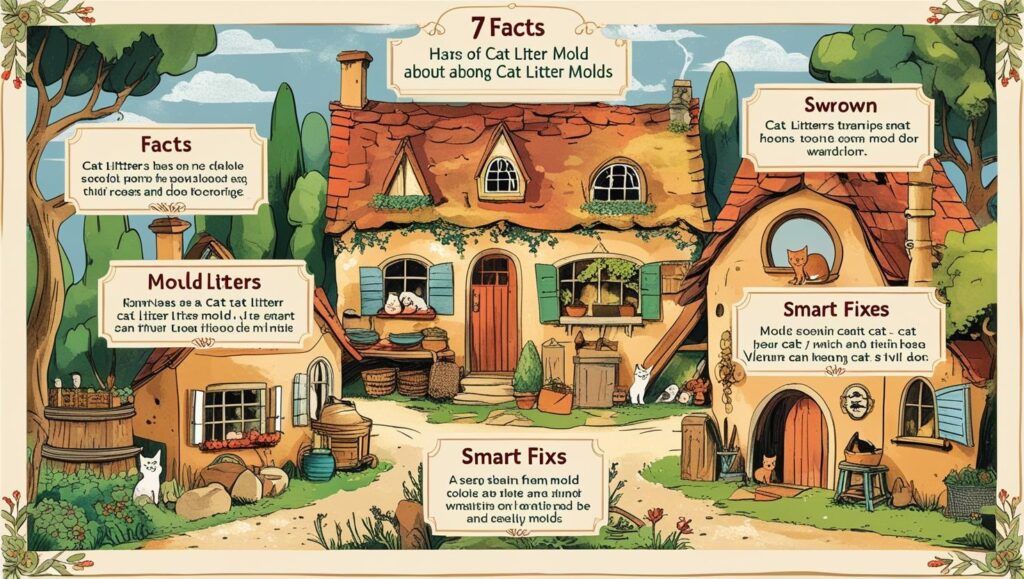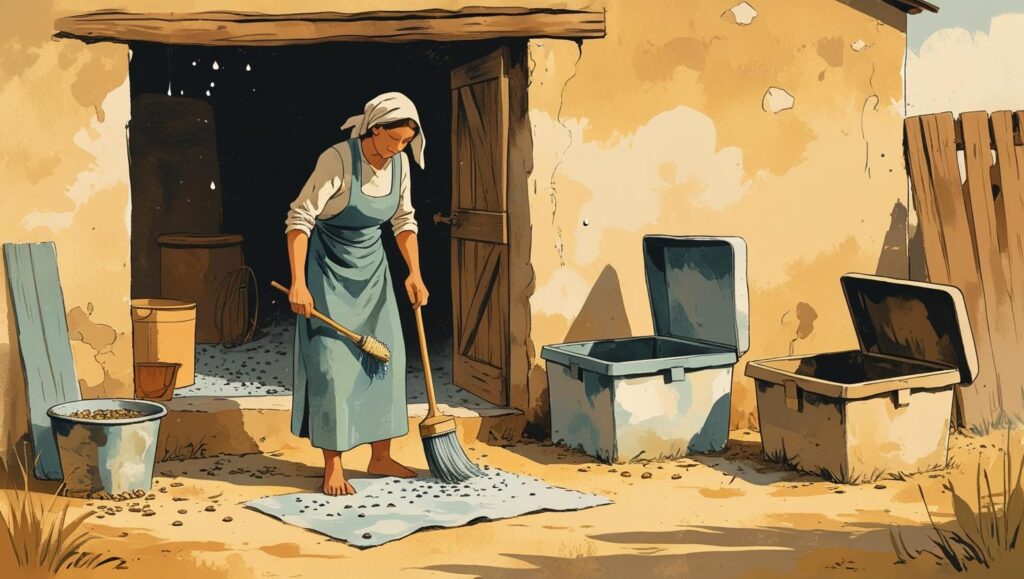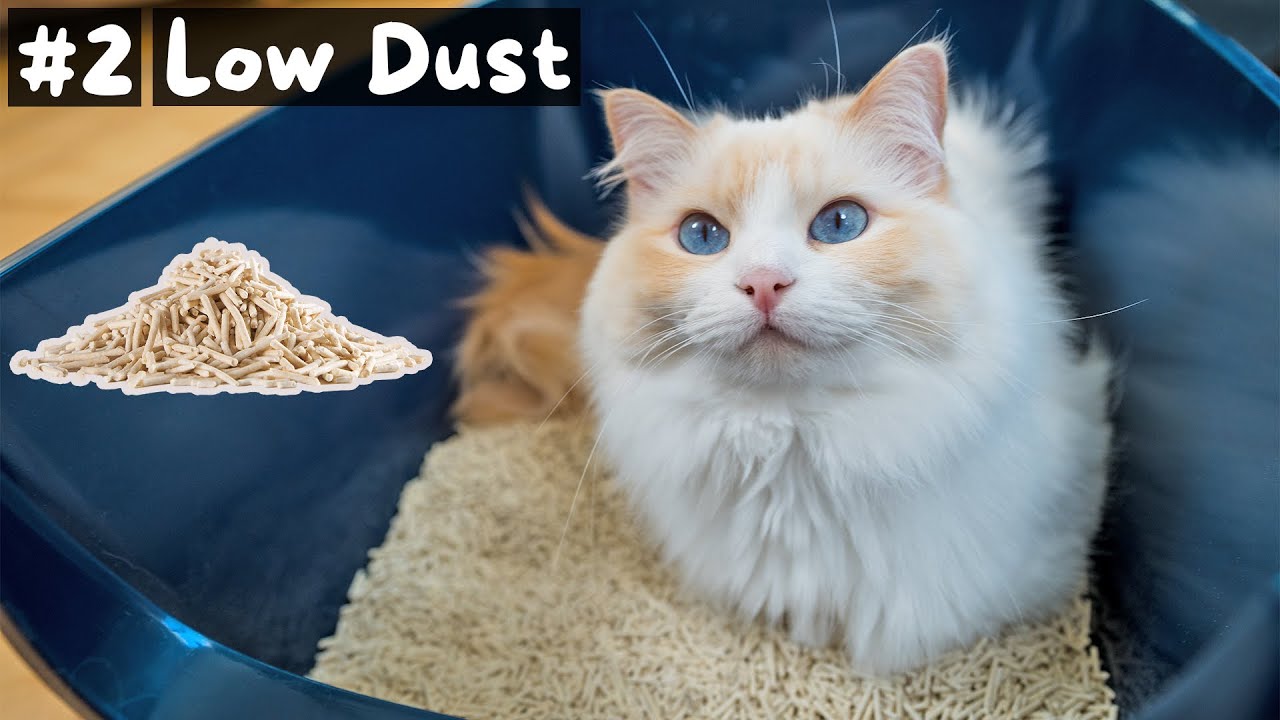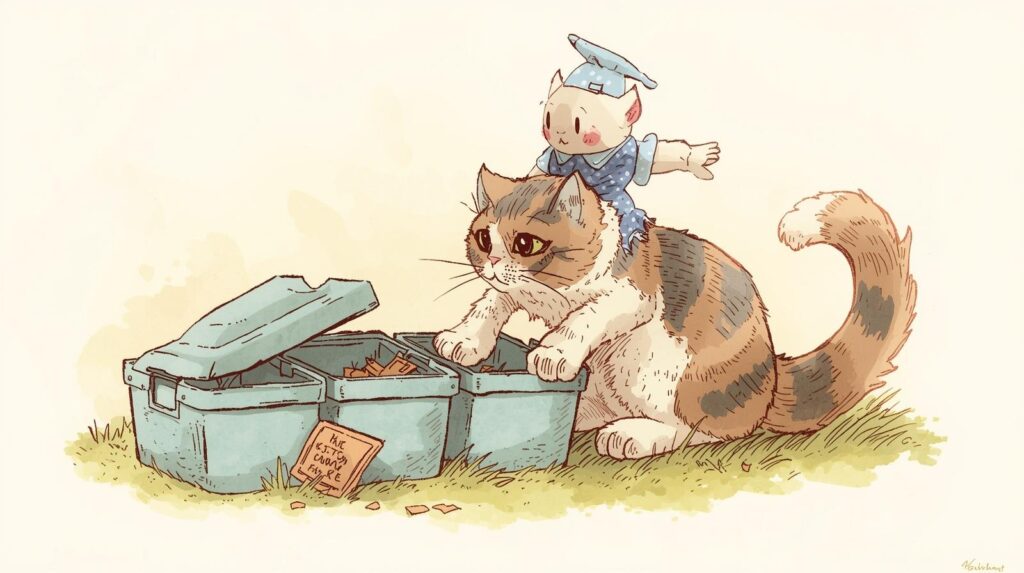
If you’ve ever noticed strange spots or a musty smell around your pet’s box, you might be dealing with cat litter mold. This hidden problem is more common than most pet owners realize. The direct answer is: cat litter mold forms when moisture, urine, or waste is left untreated in warm, damp conditions. It can be harmful to both cats and humans, causing health issues, bad odors, and even spreading spores around your home. The good news? With the right cleaning routine, safe litter choices, and smart preventive steps, you can stop cat litter mold before it becomes dangerous.
One important thing here is that you read this blog thoroughly and read it till the end. Here you will get a lot of information about your dear friend and your health, which I have created for you with great difficulty.
Can Cat Litter Cause Mold in the House?

Yes, it can. When moisture, urine, or feces sit too long, cat litter mold develops and doesn’t just stay confined to the tray. Spores can move with air currents and settle on carpets, walls, or even soft furnishings, much like Mold spores travelling through indoor air. Over time, this spread increases the chances of poor indoor air quality, persistent odors, and even health risks for sensitive individuals.
Why it spreads beyond the box
- Dust and airflow carry spores from the corner to carpets/curtains.
- Bathrooms, basements, and laundry rooms trap humidity.
- Covered boxes trap moisture; poor ventilation accelerates cat litter mold.
- When cat litter gets saturated, it stops absorbing and starts nurturing growth.
High-risk home conditions
- Indoor humidity consistently over ~50%.
- Box placed near washing machines, showers, or leaky windows.
- Organic substrates (corn/wheat/pine) that hold moisture.
- Infrequent scooping or irregular full changes.
Prevention framework (simple & effective)
- Environment: Keep RH 35–50%; use a small dehumidifier; ensure cross-ventilation.
- Routine: Scoop daily; full refresh on a predictable schedule; dry the container fully after washing.
- Materials: Choose clumping clay or silica that dries fast; avoid overly absorbent organic mixes if mold has been an issue.
Mini checklist
- Daily scoop?
- Weekly wash + full dry?
- Box in a breezy, low-humidity spot?
- Spare liner/tray to rotate while one dries?
Once cat litter mold is under control at the source, the chances of household spread drop dramatically. Homes with dehumidification and good airflow have the lowest risk of cat litter mold taking hold.
Why Does My Cat’s Pee Get Moldy?
Urine contains urea and organic compounds that microbes love. In warm, damp conditions, those compounds fuel cat litter mold. When hours turn into days, crystals and residue create even better surfaces for fungal growth.
What speeds it up
- Old clumps or pooled urine left in the litter box.
- High humidity + warm rooms.
- Diet changes that make urine more alkaline.
- Organic litters that retain moisture near the surface.
What slows it down
- Prompt scooping (1–2 times/day).
- Thin, even litter layer so clumps dry faster.
- Switching to faster-drying substrates; deep trays that limit splashing.
- Keeping the box bone-dry after washing (moist corners = starter colonies).
Is White Mold Toxic to Cats?
White fuzzy patches in the tray are a red flag for cat litter mold. While “white” doesn’t automatically mean deadly, it can irritate airways and skin, and vulnerable cats (kittens, seniors, asthmatics, immunocompromised) are more sensitive.
How to tell it’s mold (not dust/mineral residue)
- Look: Threadlike/fuzzy tufts; may form tiny circular colonies.
- Texture: Smears or mats when wiped (dust won’t mat like that).
- Smell: Musty/earthy odor near the patch.
- Behaviour: Returns quickly in the same damp spots.
What to do right away
- Wear gloves; bag and discard the entire batch.
- Wash with mild detergent or pet-safe cleaner.
- Rinse, then fully dry the tray (towel + air-dry).
- Refill with fresh substrate; move the setup to a drier location if needed.
When to call the vet
- Sneezing, coughing, eye/nasal discharge.
- Paw redness from stepping on contaminated areas.
- Appetite drop, lethargy, or vomiting after exposure.
If you see white cat litter mold, treat it as contamination: remove, disinfect, dry, relocate if necessary, and monitor your cat for symptoms.
How to Get Rid of Mold in a Litter Box?

Goal: Remove growth now and stop it from returning. Here’s a proven workflow to eliminate cat litter mold completely.
Deep-clean recipe (safe & effective)
- Empty & bag the contents; seal before disposal.
- Wash with warm water + mild dish soap (non-fragranced is best).
- Disinfect with a pet-safe product (or a diluted white vinegar rinse).
- Never mix bleach with ammonia residues—dangerous fumes.
- Rinse thoroughly and dry completely (towel + 20–30 min air-dry).
- Replace accessories (scoops/liners) if they feel slimy or smell musty.
- Refill the litter box with fresh substrate; aim for a 2.5–3.5 cm layer so clumps dry quickly.
Frequency guide
- Scoop: 1–2× daily.
- Spot-wash rim/walls: mid-week.
- Full empty + wash + dry: weekly (bi-weekly if you have multiple trays).
Substrate tune-up
- Silica gel or clumping clay dry fast and resist cat litter mold.
- If you prefer eco options, keep the layer thinner and the room drier.
- Consider switching cat litter if you repeatedly see damp patches.
Setup that prevents regrowth
- Uncovered tray in a ventilated area or covered tray with rear vents.
- Trivet or tray stand to keep the base off cold, damp floors.
- Small, quiet fan or dehumidifier nearby; sunlight exposure helps.
- Replace micro-scratched plastic trays annually; rough plastic harbors growth.
This routine prevents cat litter mold from returning. To keep cat litter mold away long-term, combine faster-drying substrates with real moisture control and predictable cleaning.
Is Dry Cat Pee Toxic?
It can be. As urine dries, it releases ammonia gases that irritate eyes, throat, and lungs. When dried urine sits near cat litter mold, the mix of irritants is tougher on people with asthma, allergies, or migraines. Prolonged exposure can even increase the risk of respiratory issues similar to Fungal infections in cats.
Who’s most at risk
- Children and pregnant people.
- Seniors and anyone with respiratory conditions.
- Immunocompromised individuals.
Safe cleanup protocol
- Ventilate first; wear gloves (and a simple mask if odor is strong).
- Moisten dried spots lightly before wiping (reduces dust kick-up).
- Use enzymatic cleaners on floors, grout, or fabric; blot, don’t rub.
- Bag used cloths/paper; wash hands afterwards.
Odor control that actually works
- Enzymes break down residues; fragrances only mask.
- Launder washable textiles on hot, then fully dry.
- For carpets: extract, enzyme-treat, extract again; repeat once if needed.
Keeping surfaces clean disrupts cat litter mold conditions and lowers ammonia exposure from dried urine.
Can Mold Make Cats Sick?

Yes. Cats exposed to cat litter mold may show respiratory, skin, or GI signs. Early recognition and a clean environment are key.
Common symptoms (what owners notice first)
- Sneezing, wheezing, coughing, watery eyes.
- Paw licking or red pads after using the tray.
- Reduced appetite, occasional vomiting, or diarrhoea.
- Hiding, irritability, or unusual lethargy.
Higher-risk cats
- Kittens/seniors.
- Asthmatic or allergic cats.
- Cats on immune-suppressing meds.
What your vet may do
- Physical exam; listen to lungs.
- Consider simple bloodwork or chest imaging if signs persist.
- Supportive care (hydration, anti-inflammatories) and environmental changes.
Home care while monitoring
- Move the setup to a drier room.
- Replace the substrate and clean as in Section 4.
- Add a small HEPA purifier near the area.
If your vet suspects cat litter mold exposure, bring photos of the setup, note cleaning frequency, and list any recent product changes—they help pinpoint the trigger faster.
Can Breathing in Cat Litter Harm You?
It can. Breathing dust laced with cat litter mold or fine mineral particles can irritate airways, especially for sensitive people.
What you’re breathing
- Fine clay/silica dust from scooping and pouring.
- Organic particles and spores from damp trays.
- Odorous gases (ammonia, VOCs) from aging waste.
How to protect yourself
- Scoop gently; pour low and slow to minimize dust plumes.
- Wear a simple mask if you’re sensitive or cleaning a neglected setup.
- Keep the area ventilated; a small HEPA purifier helps.
- Use dedicated tools; wash hands after handling.
Smart product/placement choices
- Low-dust clumping substrates; avoid heavily scented mixes if they bother you.
- Place the tray away from bedrooms or baby areas.
- Elevate the tray on a washable mat; vacuum around the area regularly.
Breathing dust laced with cat litter mold is avoidable: manage moisture, choose low-dust substrates, and ventilate the space where you maintain the tray.
FAQs
Cat litter mold reddit – what do pet owners say?
Users often share experiences of cat litter mold forming quickly in humid rooms and recommend switching to silica-based litter.
Cat litter mold treatment – what works best?
Treatment includes thorough cleaning, drying, and using anti-fungal sprays safe for pets.
Is cat litter mold dangerous for humans?
Yes, especially for people with weak immune systems or allergies.
How to get rid of cat litter mold permanently?
Use preventive steps: scoop daily, change litter weekly, and keep humidity below 50%.
Is moldy cat poop dangerous?
Yes, mold on feces can spread spores and bacteria that risk both cats and humans.
Mold on cat poop Litter-Robot – is it possible?
Yes, even automatic boxes may develop cat litter mold if waste isn’t disposed of quickly.
Further readings
How many litter boxes for 2 cats
Wrapping up
Dealing with cat litter mold is more than just a cleaning task—it’s a health and safety issue for both you and your feline companion. From understanding how it forms, to recognizing the risks of ammonia, and knowing when mold spores can travel through the air, the key is prevention and timely action. By keeping the litter box dry, cleaning regularly, and addressing odors with proper enzymatic solutions, you reduce the chances of harmful buildup.
For cat parents, the takeaway is clear: don’t underestimate the dangers. Small steps like monitoring humidity, choosing the right cat litter, and following safe cleanup protocols will keep your home fresher and your pets healthier. And if you ever notice recurring mold problems, consulting your vet ensures your cat stays safe from potential respiratory or fungal issues.
Ultimately, staying proactive against cat litter mold means a cleaner home, healthier air, and a happier cat.



